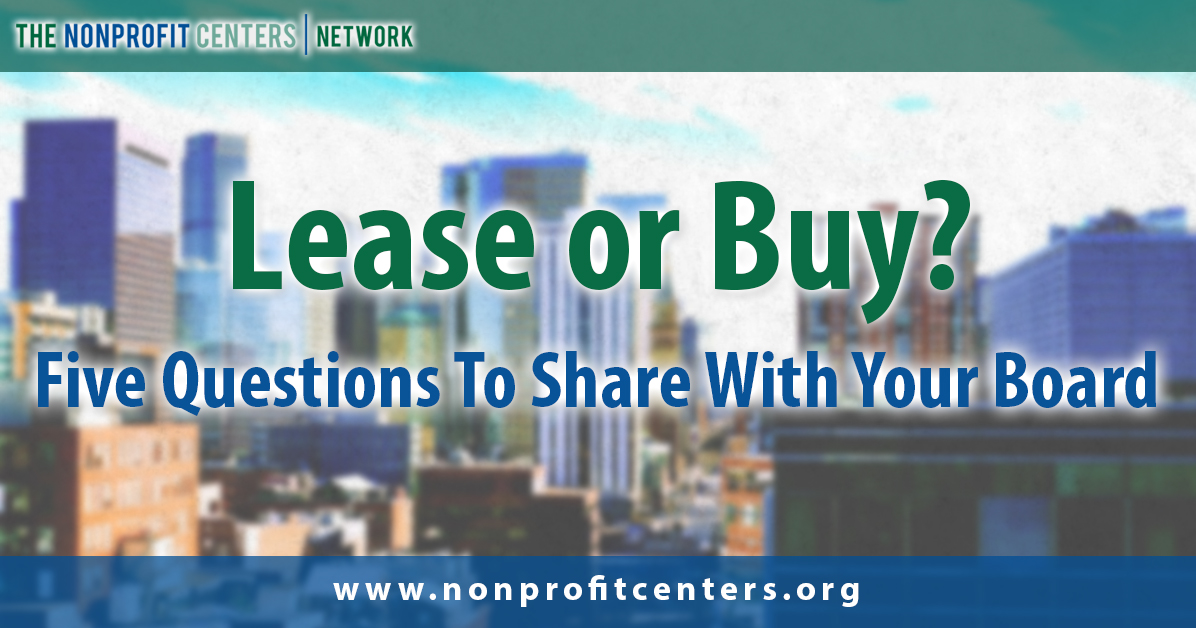At some point, every nonprofit struggles with the question of whether to lease office space or whether they should buy. Board members may feel like they are “wasting” money on rent, when they could be investing in a commercial property. On the flip side, many nonprofits get in over their heads by buying a bigger building than they can sustain.
A nonprofit building purchase should involve many thoughtful analyses, guided by real estate and lending professionals. If you’re starting to ponder this question, here are some questions to start the conversation:
- Is our organization financially healthy? If you end each year with a surplus and have a steady, predictable revenue stream, buying is a good option (although, you’ll need to do a financial analysis to if you can afford the building and its capital maintenance). If not, leasing allows for more flexibility to grow or contract as you stabilize your revenue stream.
- How important is proximity to the people that you serve? Human beings are mobile by nature. As conditions change in a community, people move. If your nonprofit owns a building, you may not be able to follow your clients.
- Do you anticipate significant growth in the next five years? Nonprofits need facilities that are the right size or they risk incurring significant unnecessary costs. If you aren’t sure of your growth rate, you would be better off in a lease scenario to minimize costs.
- Do you have sufficient staff to manage a building? Just like a house, a commercial real estate building requires ongoing care and maintenance. If your staff is already overcommitted, you will either need to hire a property manager or let a landlord deal with this workload.
- How specialized do you need your facilities to be? If your needs are pretty standard, you may be able to affordable lease. However, if you require extensive renovations and tenant improvement, you may want to consider purchasing a space and starting from scratch.
If you’re interested in shared space, we’ve seen very successful models that use both approaches. It can be a great addition in either scenario, and a growing number of landlords are amenable to the idea. Make sure to begin discussing your space needs with your board six months to a year in advance of needing a new space, to allow plenty of time to make an informed decision.

